Perlite and vermiculite are two common soil amendments that gardeners use for seed starting, adding to potting mix, and even growing hydroponically. These minerals are often used to improve the quality of the soil and each has its own unique benefits.
But which one should you use in your garden? Here’s what I’ve learned over the years about both.
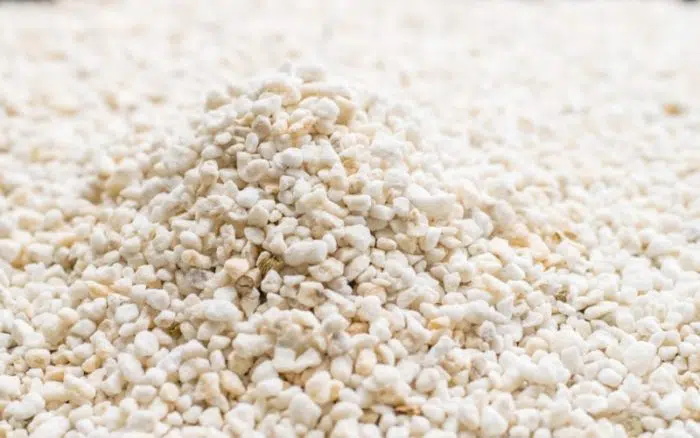
What is Perlite?
You’ve probably seen perlite in potting mixes you’ve used in the past. Perlite is those white stones that are added into commercially made potting soils.
While perlite is most commonly used as an additive to soil mixtures, it can be used on its own as a growing medium. When used alone as a growing medium, perlite promotes aeration while also preventing moisture and nutrient losses due to evaporation.
Perlite doesn’t change its shape or structure after going through wet and dry cycles, so it can be reused many times over.
The typical particle size of horticultural perlite ranges from 1/16-inch to 1/8-inch; however, very fine grades (less than 1/32 inch in diameter) are also available.
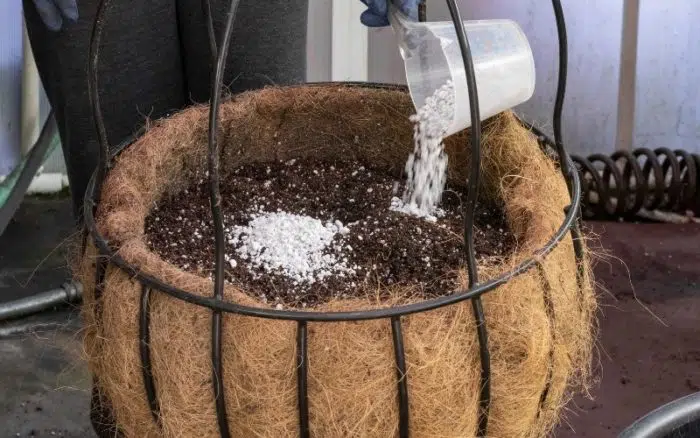
These properties of horticultural grade perlite make it a great option for greenhouse and hydroponic mediums.
Perlite has a neutral pH, is sterile, does not provide any nutrition to plants, but does provide great drainage and aeration while holding a limited amount of water.
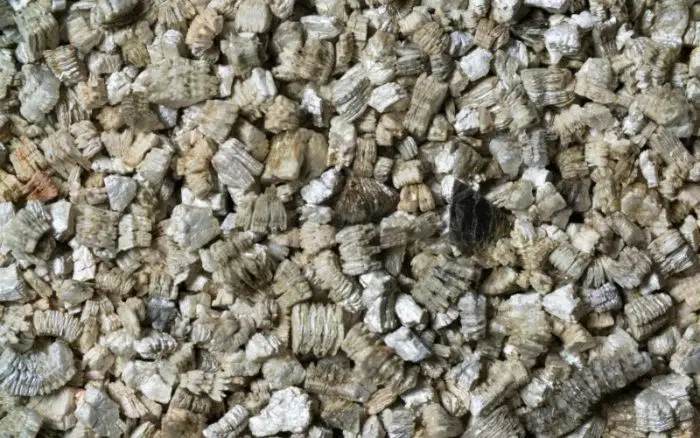
Vermiculite and Square Foot Gardening
Vermiculite is a mineral that is mined and then expanded into light, porous pieces. It is used in a variety of ways, but it is most commonly used as insulation or as a soil amendment.
When used as an amendment, it helps to aerate the soil and retain moisture. It also improves drainage and makes it easier for roots to spread. Vermiculite is often used in conjunction with peat moss to create a lightweight, well-draining potting mix.
Square foot gardening is a planting method that uses square or rectangular beds instead of traditional row planting. This method can be used in small spaces, and it allows gardeners to maximize their yield by planting more densely.
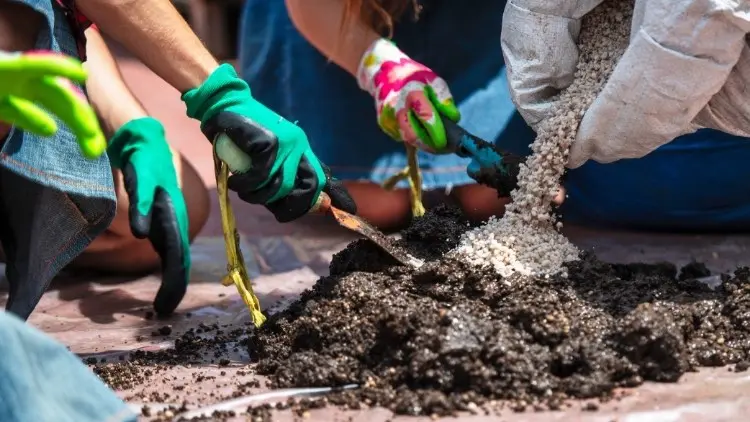
There is a method of creating soil mixtures called Mel’s Mix that is really popular for raised bed and square foot gardening – it’s also my favorite soil mixture recipe. The mixture includes vermiculite because of its water retention properties.
One advantage of square foot gardening is that it helps to prevent soil erosion. By planting in raised beds, gardeners can reduce the amount of compacted soil around their plants.
This helps the soil retain moisture and prevents rain from washing away nutrients. In addition, square foot gardening can help gardeners to save time and money by using less water and fertilizer.
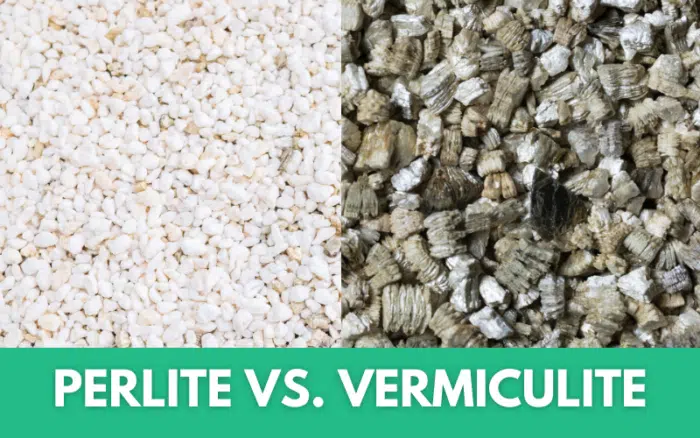
Common Traits of Perlite Vs. Vermiculite
Both perlite and vermiculite have several common traits:
- Both are very lightweight materials
- They have a high surface area
- They are good insulators.
- Both are used in a variety of industries, including construction, gardening, and horticulture.
While they have some similarities, perlite and vermiculite also have several distinct differences. For instance, perlite is white or gray while vermiculite can be brown, green, or red.
Perlite is also more brittle than vermiculite and has a lower water-holding capacity. As a result of these differences, perlite and vermiculite are used for different purposes in a variety of industries.
Differences Between Perlite Vs. Vermiculite
Perlite can also be used to insulate plant roots from extreme temperatures. Improving drainage of the soil can help prevent root rot for some potted plants as well.
Vermiculite is also a lightweight, heat-expanded mineral, but it is made from mica instead of volcanic rock.
Vermiculite has a high water-holding capacity, which makes it useful for plants that need lots of moisture. It can also help to improve drainage in heavy soils. Vermiculite can be used on its own or mixed with other amendments to create a custom planting mix.
Which to Use In Your Garden?
These two materials are often used in gardening and can be beneficial for your plants. So, which should you use in your garden?
Uses for Perlite
Perlite is often found in soil mixes and potting soils because it improves aeration and drainage. Remember those two: drainage and aeration.
Because drainage is one of perlite’s specialties, when you’re planting things like succulents or cacti that do not like constantly moist soil, perlite is a great option. Perlite is often thought of as a lightweight sand substitute.
Uses for Vermiculite
Vermiculite is really good at water retention, so it’s best for seed germination or when you grow water-loving plants like tomatoes and lettuce.
Vermiculite acts like a constant watering can for your plants with its moisture retention properties, while making sure they don’t stay too wet. That’s why vermiculite is a favorite in organic gardening and as potting soil for plants.
Can You Mix Perlite and Vermiculite?
You can absolutely mix perlite and vermiculite together to use in your soil. This will help with some water retention properties while also helping drain the soil and improving soil aeration. The combination is usually not necessary for most plants, as they either like well-drained soil, or they like consistently moist soil.
But it is definitely doable if you need the soil structure properties of both.



I have recently gotten into succulents. Now I am procreating my own. I am seeing both perilite and vermiculite in the potting mix. Mixing my own, I was not sure of the ratio to use. After reading this, I find I will not hurt anything if I mix them equally. I live in NE Florida. We have our dry season as well as a wet season. With this information I have discovered many separate uses and combined uses for both. Thank you very much. Karen M.
Thank you. I’m creating my own potting mix for the first time. Your explanation is really helpful.